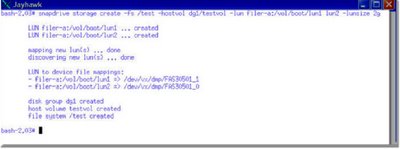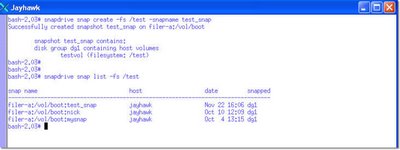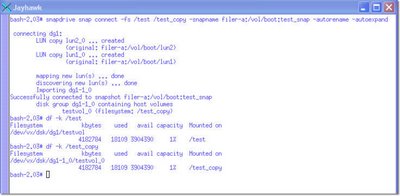"I guess eventually OS and Apps have to start supporting thin provisioning, in terms of how they access the disk, and also in terms of instrumentation for monitoring and alerting"
Back in that article I had written that I would not deploy thin provisioning for new applications for which I had no usage metrics and for applications which would write, delete or quickly re-write data in a LUN. Here's why, up until now, I would avoid the latter scenario.
The example below attempts to illustrate this point.
Lets assume I have thinly provisioned a 100GB LUN to a Windows server.
I now fill in 50% of the LUN with data. Upon doing this, capacity utilization, from a filesystem standpoint is 50%, and from an array perspective is also 50%.
I then proceed to completely fill the LUN. Now, the filesystem and array capacity utilization are both at 100%.
Then I decide to delete 50% of the data in the LUN. What’s the filesystem and array capacity utilization? Folks are quick to reply that it’s at 50% but that is a partially correct answer. The correct answer is that filesystem utilization is at 50% but array utilization is still at 100%. The reason is that even though NTFS has freed some blocks upon deleting half of the data in the LUN, from an array perspective, these blocks still reside on the disk as there is no way for the array to know that the data is no longer needed.
So now, if more data is written in the LUN, there is no guarantee that the filesystem, will use the exact same blocks it freed previously to write the new data. That means that in a Thin Provisioning scenario, this behavior may trigger a storage allocation on the array when in fact such allocation may not be needed. So now, we’re back to square one in attempting to solve the exact same storage over-allocation challenge.
SnapDrive for Windows 5.0
With the int
 roduction of SnapDrive for Windows 5.0, Network Appliance, introduced a feature called Space Reclamation.
roduction of SnapDrive for Windows 5.0, Network Appliance, introduced a feature called Space Reclamation.The idea is to provide integration between NTFS and WAFL via a mechanism that will notify WAFL when NTFS has freed blocks so that WAFL, in turn, can reclaim these blocks and mark them as free.
Within SnapDrive 5.0 the space reclamation process can be initiated either via the GUI or the CLI. Upon initiating the space reclamation process, a pop-up window for the given LUN will inform the Administrator as to whether or not a space reclamation operation is needed, and if indeed, how much space will be reclaimed.
 Additionally, the space reclamation process can be timed and the time window can be specified in minutes, 1-10080 minutes or 7 days, for the process to execute. Furthermore, there is no licensing requirement in order to utilize the Space Reclamation feature as it is bundled in with the recently released version of SnapDrive 5.0. However, the requirement is that the version of DataONTAP must be at 7.2.1 or later.
Additionally, the space reclamation process can be timed and the time window can be specified in minutes, 1-10080 minutes or 7 days, for the process to execute. Furthermore, there is no licensing requirement in order to utilize the Space Reclamation feature as it is bundled in with the recently released version of SnapDrive 5.0. However, the requirement is that the version of DataONTAP must be at 7.2.1 or later.Performance is strictly dependent upon the number and the size of LUNs that are under the space reclamation process.
As a general rule, we recommend that the process is run during low I/O activity periods and when Snapshot operations such as snapshot create and snap restore are not in use.
While other competitors offer thin provisioning, Network Appliance, once again, has been the first to provide yet another innovative and important tool that helps our customers not only to safely deploy thin provisioning but also realize the benefits that derive from it.





